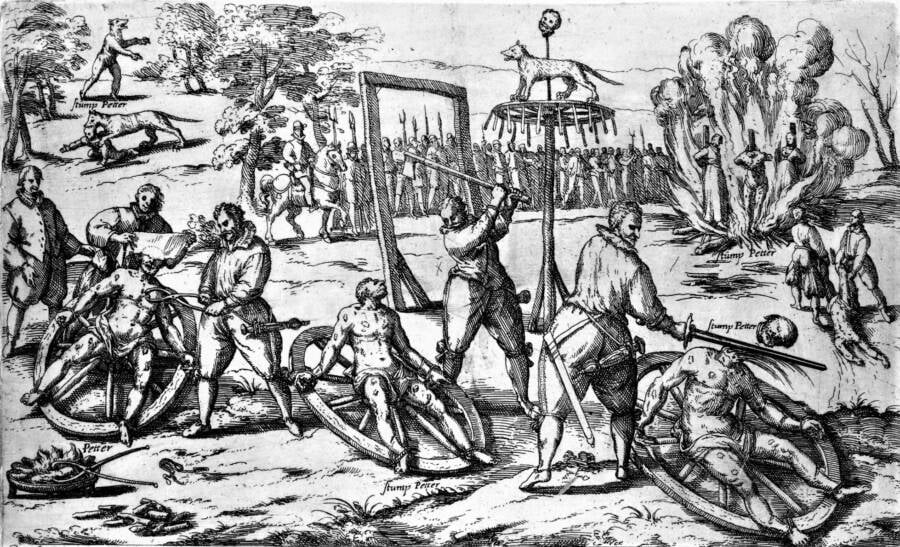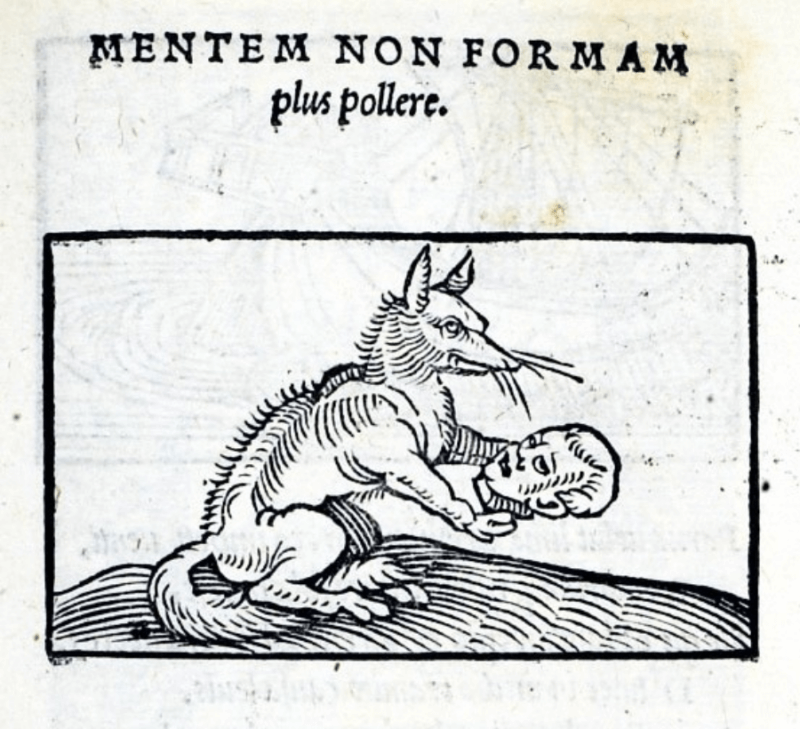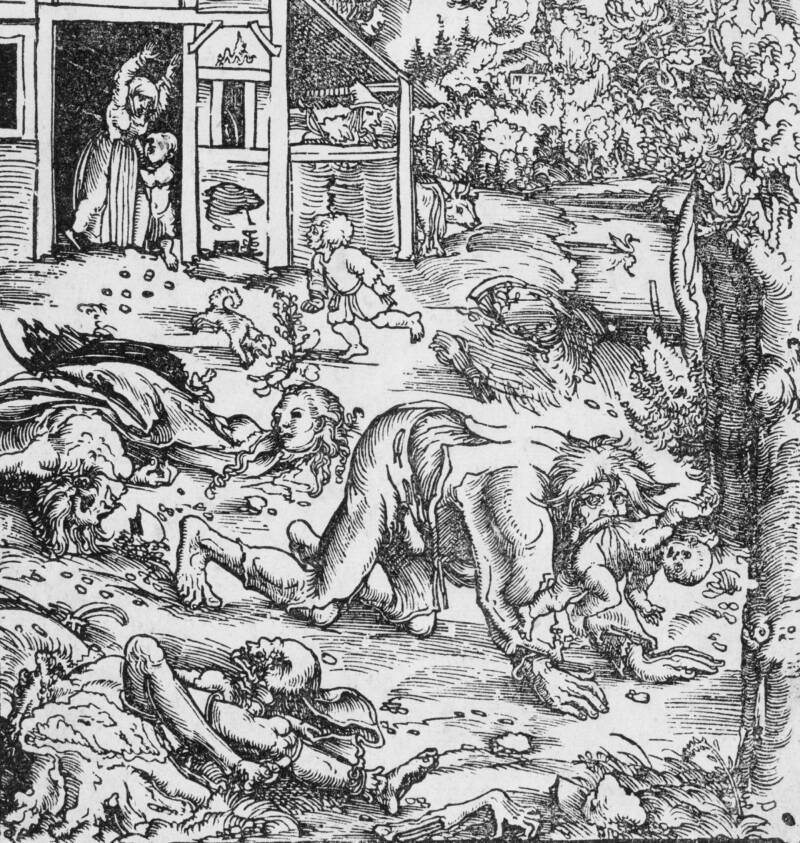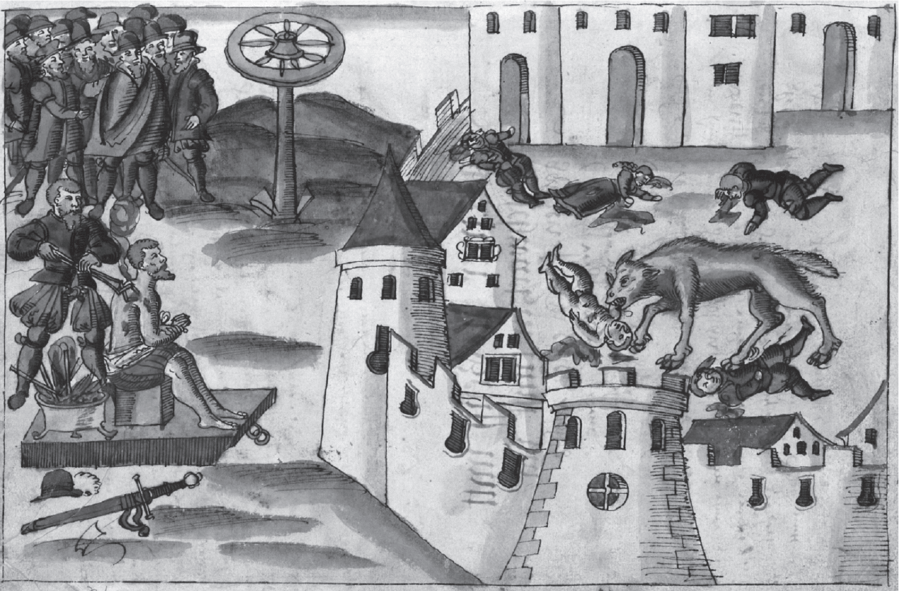Horrifying tales of torture, decapitation, and murder — and those are just the acts committed by the accusers in the werewolf trials of Renaissance Europe.
The Salem witch trials of 1692 remain among the most infamous episodes in all of American history. But across the sea, in Europe, hundreds of years prior, similar events took place, this time involving persons accused of lycanthropy or shape-shifting into werewolves.
Beginning in the 14th century, as fears spread throughout Europe of witches and Satanic forces, the fear of lycanthropy developed alongside them, particularly in areas with significant wolf populations.

Public Domain The execution of Peter Stumpp in Cologne in 1589 was incredibly thorough, ending with his decapitation and burning to prevent any kind of return from the grave.
Like their more famous witch trial counterparts, the werewolf trials were often encouraged by panicked mob behavior and confessions obtained through torture and coercion.
In most cases, the murders or attacks the alleged werewolf was accused of were not even the focus of such trials. Instead, they were just the pretense used to convict them of witchcraft, often resulting in a brutal execution.
These were the werewolf trials of Renaissance Europe.
Men In Black, Magic Girdles, And Cannibalism
According to Mental Floss, one of the earliest recorded instances of anyone being accused and convicted of lycanthropy occurred in Poligny, France in 1521.
As the story goes, a supposed wolf attack led authorities to the home of Michel Verdun, who, after being arrested and tortured, confessed to being a werewolf. He also pointed to two other men, Pierre Bourgot and Philibert Montot.

Public Domain A depiction of a wolf murdering a man from 1531.
Bourgot also confessed and told authorities of a deal made with three men dressed in black, who agreed to protect his sheep in exchange for the rejection of his belief in God. He was given an ointment that allowed them to shapeshift into wolves, during which time they would stalk the land, killing and eating children.
All three men were found guilty and were executed shortly thereafter.
The accounts of lycanthropy that follow that first one are eerily similar in detail, many of them involving ointments and deals struck with otherworldly characters.
Along with supposed deals with the devil and magical belts, cannibalism is another recurring theme among almost all of these lycanthropy cases.
The 1598 case of Frenchmen Jacques Roulet, also known as “The Werewolf of Caud,” involved the use of a transformational salve, which Roulet allegedly used to shape-shift in order to murder and eat several young children.
Frenchman Gilles Gardner was accused of killing and cannibalizing children who ventured into his part of the woods after he was allegedly seen by a search party holding the body of a child. Later, he would confess to being a werewolf and taking the meat of the children to share with his wife. He was burned at the stake in 1573.
As many of these confessions of lycanthropy from Gardner and others only came later, long after the alleged incidents took place, with many historians believe them to be either coerced through the use of torture or perhaps attributable to the suspects’ mental illness or a simple inability to understand exactly what they were confessing to.

Public Domain The werewolf trials were less focused on lycanthropy as they were on witchcraft and deals with Satan.
Werewolf Trials Were Not Always A Death Sentence
While most of the accused never lived to see another day, not all werewolves were guaranteed a torturous death.
In the case of Roulet, “The Werewolf of Caud,” he was initially sentenced to death for his crimes. However a conviction of “feeble-mindedness” instead sent him to an asylum where he received a religious education before being released just two years later.
In another case, 80-year-old Theiss of Kaltenbrun told various tales of magic and lycanthropy but received a relatively lenient punishment. According to author Willem de Blécourt in A Journey to Hell: Reconsidering the Livonian “Werewolf”, Theiss was originally brought in by judges in what is now Latvia in order to serve as a witness in “an unrelated case about a church robbery.”
Theiss and the judges, however, quickly got off-track, diving deeply into rumors that the man was a werewolf. He did not dispute the idea and claimed to be a “Hound of God,” saying he used his werewolf cloak to enter Hell three nights a year, where he battled devils and witches to ensure a good harvest for the next season.
Despite all the discussion of lycanthropy, though, Theiss was ultimately only convicted of practicing folk magic believed to encourage the rejection of God. He was sentenced merely to flogging and banishment — a much lighter punishment than so many of history’s supposed “werewolves” once had to endure.
The Brutal Story Of The Werewolf Of Bedburg

Public DomainThe Werewolf or the Cannibal, 1512, by Lucas Cranach the Elder.
The fate of the German man Peter Stumpp (sometimes written as Stubbe, Stube, or Stumpf) was not so fortunate. Accused of dozens of murders and cannibalizations over 25 years, Stumpp confessed readily in 1589 to having made a deal with the devil in which he was gifted a belt allowing him to shape-shift.
As recorded in a 1590 report by George Bores called The Damnable Life and Death of Stubbe Peeter, none of the world’s villains were “comparable unto this Hell hound… who was a murderer from the beginning.”
“The Devil, who saw him a fit instrument to perform mischief as a wicked fiend pleased with the desire of wrong and destruction, gave unto him a girdle which, being put around him, he was straight transformed into the likeness of a greedy, devouring wolf,” Bores wrote, “strong and mighty, with eyes great and large, which in the night sparkled like unto brands of fire, a mouth great and wide, with most sharp and cruel teeth, a huge body and mighty paws.”
Stumpp was publicly executed on Oct. 31, 1589 in a most gruesome way: His skin was ripped away, arms and legs broken, and his head removed before being burned. His mistress and his daughter were also reportedly burned alongside him as accomplices.
Following Stumpps’s execution, Bores wrote that the magistrates of the town placed his head upon a stake alongside the likeness of a wolf framed in wood “to show unto all men the shape wherein he executed those cruelties.”
An Entire Family Subjected To A Werewolf Trial

Public Domain Witch trials first developed during the waning years of the Middle Ages and blossomed amid the European Renaissance.
Not long after that, a family in the Netherlands was implicated in a wide-reaching accusation of lycanthropy and witchcraft. Folkert Dirks and his five children were all arrested. In an article for historicum.net translated from German, Dries Vanysacker described how Hessel, Dirks’ 14-year-old son, confessed to the family having made a pact and dancing with the devil.
“According to Hessel’s testimony, the devil once flew in through the chimney with a red cat. Suddenly the cat turned into a woman and started dancing with everyone. This continued for some time until the devil suddenly said: ‘You terrible animal, I order you to follow me,'” Vanysacker wrote.
“The devil tied a leather belt around the woman and she suddenly turned into a wolf. Then the devil, the cat-woman-wolf and Hessel flew through the chimney to a field. There the devil and Hessel also turned into a wolf and together they attacked and ate animals.”
As for Folkert Dirks, he said he had been given a doublet three years earlier that made him feel “like doing evil” and gave him the ability to transform into a wolf.
“Several times he ran through the fields with his children to bite the cattle,” Vanysacker described.
Dirks’ daughter, 17-year-old Hendricka, said that she began consorting with the devil at just 11 years old, sleeping with him multiple times over a period of years. She said her father had her walk “through the fields as a werewolf” and participate in several “dance events.”
Similar stories of cats, dancing, and wolves were told by the various family members. Dirks, Hendricka, and two others accused by her were all sentenced to burnings at the stake. The four sons were spared.
The Tragic Trial Of Hans

Public DomainA drawing from the 16th century showing a supposed werewolf attack in Geneva where 16 children were killed. The “werewolf” in question was executed on October 15, 1580.
One of the most famous werewolf trials was that of a teenage boy named Hans, who was accused during the werewolf trials in Estonia. Only 18 years old when he was arrested in 1651 on charges of lycanthropy, Hans quickly confessed to the charges brought against him.
Admitting to having hunted as a werewolf for two years, Hans told the court of a man in black who bit him shortly before the physical changes occurred. Many believed this man in black to be the devil, and this mention of Satanic forces qualified the werewolf to be tried as a witch and thus sentenced to death. When asked by a judge whether he felt more like a man or an animal, Hans replied that he, probably not unlike most 18-year-olds, felt like a “wild beast,” and that the changes within him could be measured both physically and metaphysically.
Despite there being no physical evidence of any murders committed by Hans, he was sentenced to death simply on the grounds that Satanic magic had been performed upon him.
Though witch and werewolf trials gripped the continent for hundreds of years, by the early 17th century, interest in them had waned. The fear and fanaticism that once spawned them did not, however, and the brutal panic would crop up not long afterward — as the famous Salem Witch Trials of 1692.
Werewolves themselves, on the other hand, would enter the realm of myth and superstition. While legitimate fear of werewolves stalking the night may have declined, their status as an iconic monster of folklore has only grown over the centuries — thankfully, with far less violent consequences.
Next, check out the Spanish witch trial considered to be worse than Salem, and the true historical origin of the witch.





